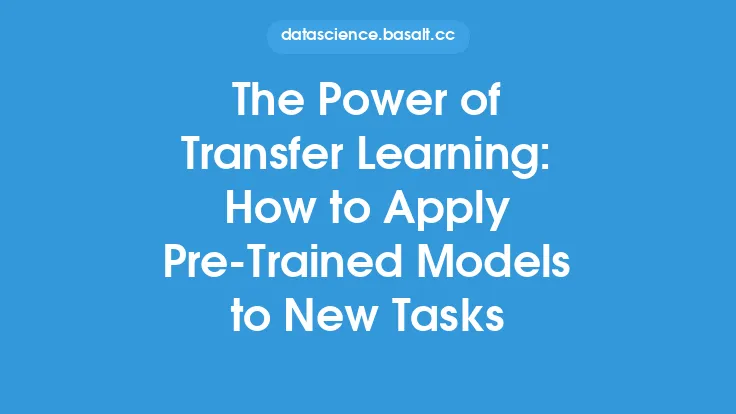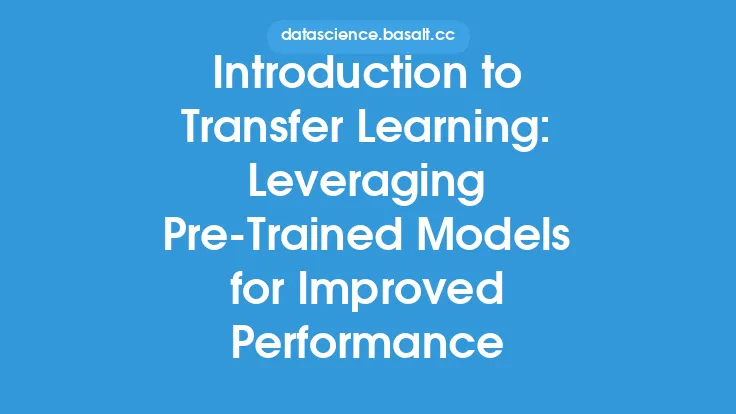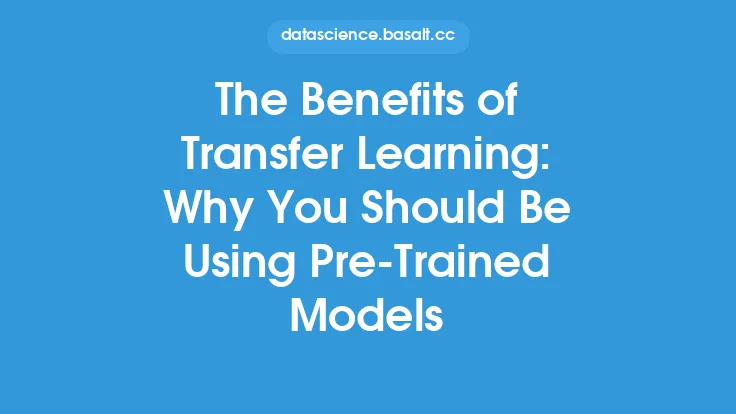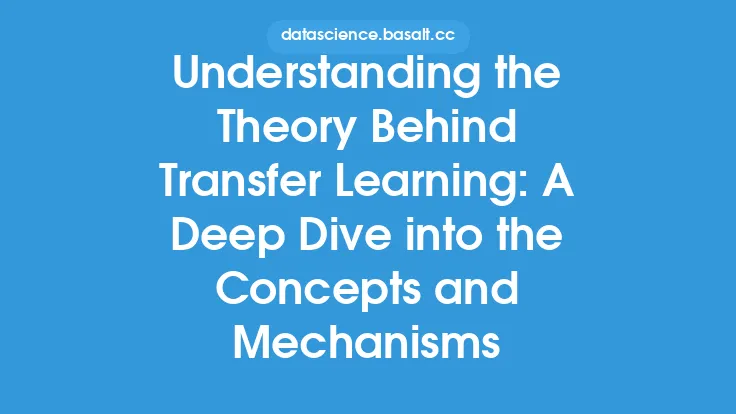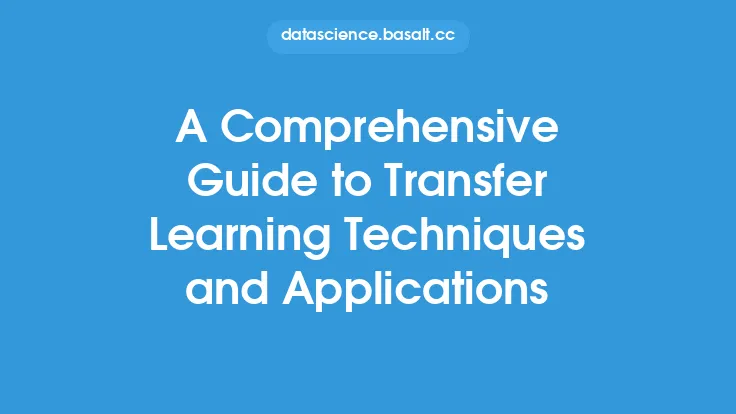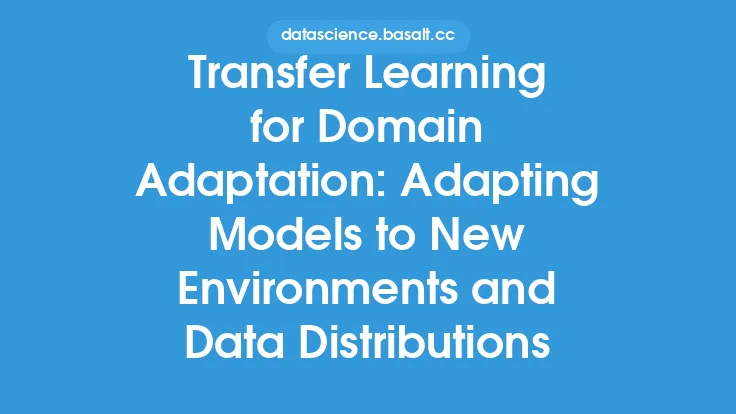The concept of transfer learning has revolutionized the field of machine learning by enabling the use of pre-trained models as a starting point for new, but related tasks. This approach has been shown to significantly improve model accuracy and reduce training time, making it a highly desirable technique in the machine learning community. In this article, we will delve into the details of how transfer learning can achieve these benefits and explore the underlying mechanisms that make it so effective.
What is Transfer Learning?
Transfer learning is a machine learning technique where a model trained on one task is re-purposed or fine-tuned for another related task. The pre-trained model, typically trained on a large dataset, has already learned to recognize certain features and patterns that are relevant to the original task. By leveraging this existing knowledge, the model can be adapted to perform well on a new task with a smaller dataset, reducing the need for extensive training from scratch.
How Transfer Learning Improves Model Accuracy
The improvement in model accuracy achieved through transfer learning can be attributed to several factors. Firstly, the pre-trained model has already learned to recognize general features and patterns that are applicable to a wide range of tasks. These features, such as edges, textures, and shapes, are often shared across different datasets and tasks, allowing the model to generalize well to new, unseen data. Secondly, the pre-trained model has been trained on a large dataset, which provides a more comprehensive understanding of the underlying patterns and relationships in the data. This knowledge is then transferred to the new task, enabling the model to make more accurate predictions.
Reducing Training Time with Transfer Learning
One of the most significant advantages of transfer learning is the reduction in training time. Training a model from scratch can be a time-consuming and computationally expensive process, requiring large amounts of data and computational resources. In contrast, transfer learning allows for the use of a pre-trained model as a starting point, which has already been trained on a large dataset. This means that the model has already learned to recognize many of the features and patterns relevant to the task, and only requires fine-tuning to adapt to the new dataset. As a result, the training time is significantly reduced, making it possible to develop and deploy models much faster.
Technical Aspects of Transfer Learning
From a technical perspective, transfer learning involves the use of a pre-trained model as a starting point for the new task. The pre-trained model is typically trained using a large dataset, such as ImageNet, and is then fine-tuned using a smaller dataset specific to the new task. The fine-tuning process involves adjusting the model's weights and biases to adapt to the new dataset, while retaining the knowledge and features learned from the pre-trained model. This is typically achieved through the use of techniques such as weight decay, dropout, and learning rate scheduling, which help to prevent overfitting and ensure that the model generalizes well to new, unseen data.
Choosing the Right Pre-Trained Model
The choice of pre-trained model is critical to the success of transfer learning. The pre-trained model should be trained on a dataset that is similar to the new task, and should have learned features and patterns that are relevant to the task. For example, a model pre-trained on ImageNet may be a good starting point for a task involving image classification, while a model pre-trained on a dataset of text may be more suitable for a task involving natural language processing. The choice of pre-trained model will depend on the specific task and dataset, and may require some experimentation to find the best model for the job.
Fine-Tuning the Pre-Trained Model
Fine-tuning the pre-trained model is a critical step in the transfer learning process. The goal of fine-tuning is to adapt the pre-trained model to the new dataset, while retaining the knowledge and features learned from the pre-trained model. This is typically achieved through the use of a smaller learning rate and a smaller batch size, which helps to prevent overfitting and ensures that the model generalizes well to new, unseen data. The fine-tuning process may also involve the use of techniques such as weight decay and dropout, which help to regularize the model and prevent overfitting.
Real-World Applications of Transfer Learning
Transfer learning has a wide range of real-world applications, from image and speech recognition to natural language processing and recommender systems. For example, a company developing a self-driving car may use a pre-trained model as a starting point for their image recognition system, fine-tuning the model to recognize specific features and patterns relevant to the task. Similarly, a company developing a virtual assistant may use a pre-trained model as a starting point for their natural language processing system, fine-tuning the model to recognize specific commands and intents.
Conclusion
In conclusion, transfer learning is a powerful technique that can significantly improve model accuracy and reduce training time. By leveraging the knowledge and features learned from a pre-trained model, transfer learning enables the development of highly accurate models using smaller datasets and less computational resources. The choice of pre-trained model and the fine-tuning process are critical to the success of transfer learning, and may require some experimentation to find the best model for the job. As the field of machine learning continues to evolve, transfer learning is likely to play an increasingly important role in the development of highly accurate and efficient models.
